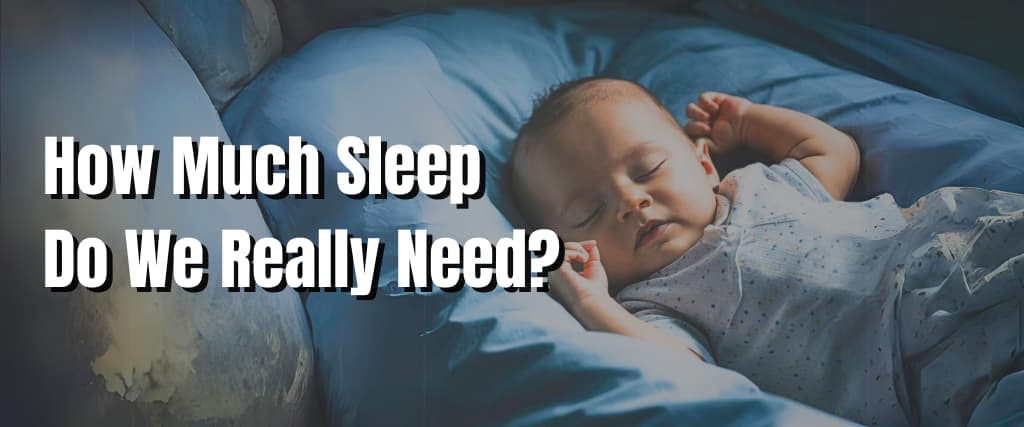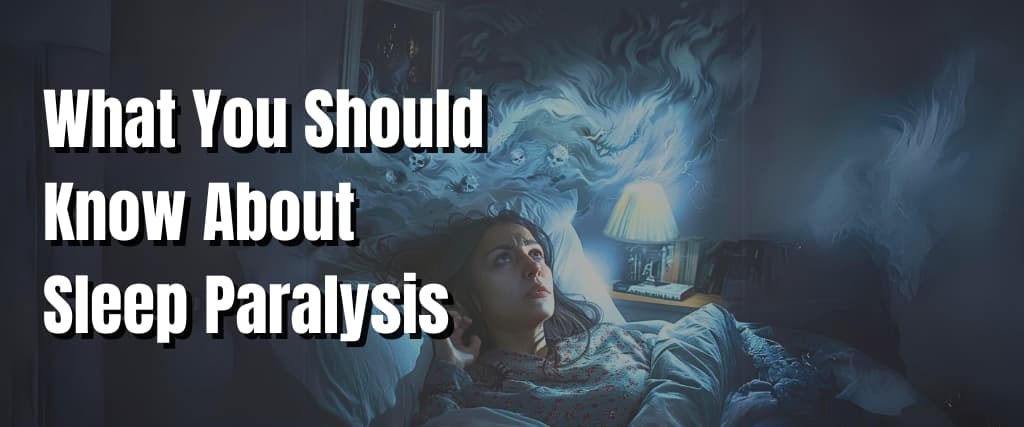Every night, we all go to bed and effectively “switch ourselves off” for a few hours and take a journey through the many stages and cycles of sleep.
Sleeping is a complicated physiological process that is still not completely understood. Only until recently have we truly begun to discover the many different stages that our body goes through during sleep and the roles they have to play in rejuvenating our brains and bodies.

We all know that sleeping is an essential part of our daily life and vital for the optimal functioning of our bodies.
But how does it work? What are the different stages, cycles, and processes that occur inside our brains during sleep? These are some of the questions this article will help answer. So let’s get right into it.
What are sleep cycles?
Sleep is a dynamic and flexible process. During the night, the total duration of your sleep consists of multiple rounds of a cycle known as the sleep cycle.
The sleep cycle consists of four different stages of sleep and each cycle’s duration may vary. Generally, a cycle lasts for roughly about 90 minutes and an average person goes through roughly four to six such cycles each night.
Are all sleep cycles the same?

Although each sleep cycle is made up of the same four stages of sleep, the duration of each cycle and the total number of cycles a person goes through can vary.
It is quite common for sleep cycles to change in duration as your sleep progresses. The lengths of individual stages of sleep vary and this, in turn, can cause differences in the total length of your sleep cycles.
Generally, the first cycle tends to be the shortest and often lasts for less than 100 minutes, while the following cycles are usually a bit longer and range from anywhere between 90 to 120 minutes.
It’s also important to realize that sleep cycles may vary in different individuals based on a diverse group of factors such as age, sleeping practices, and drug and substance abuse.
What are the different stages of sleep?

Our sleep consists of four distinct stages of sleep, which we transition through in a sleep cycle.
One important thing to know before we start discussing the different stages of sleep is that there are two basic types of sleep: rapid eye movement (REM) sleep and non-REM (NREM) sleep. Out of the four different stages of sleep, the first three stages belong to the NREM type of sleep and the final stage belongs to the REM type.
Each of these stages helps carry out many different beneficial functions such as memory reinforcement and tissue repair.
Similarly, each stage also has its own distinct patterns of brain activity and lasts for different durations of time. If the duration of sleep is not long enough, some of these stages may be cut short and your body will suffer as a result.

Initially, it was believed that sleep consisted of five stages, but in 2007 the American Academy of Sleep Medicine (AASM) updated the classification under consensus, and now only 4 stages are believed to exist.
The overall structure of the four sleep stages and cycles throughout a night’s rest is referred to as sleep architecture.
Studying the sleep architecture as whole helps build a complete and detailed image of what a person’s sleep looks like. This data can be visually represented as a graph called a hypnogram, which is created using an electroencephalogram (EEG) during a sleep study (also called polysomnography).
| Stage Of Sleep | Type Of Sleep | Duration |
| Stage1 | NREM | 1-5 minutes |
| Stage 2 | NREM | 10-60 minutes |
| Stage 3 | NREM | 20-40 minutes |
| Stage 4 | REM | 10-60 minutes |
The NREM Stages of Sleep
Before reaching the REM stage of sleep, you have to go through the first three NREM stages. As the NREM stages progress, the depth of sleep increases and it becomes increasingly difficult to wake a person up from their sleep.
1st Stage of Sleep

The first stage is the shifting point from being awake to being asleep. This stage lasts for less than 5 minutes usually, and during this time your brain activity and patterns begin to slow down.
During this stage, the brain is still relatively active and produces high amplitude waves called theta waves, which are usually found in the brain’s frontal lobe.
In addition, your heart rate falls, eye movements decrease, and muscles start to relax with occasional spasms.
The sleep in this stage is not too deep and this is the stage that is easiest to wake up from. Basically, this stage is the “nodding off” phase, and if the person doesn’t wake up in this stage, sleep progresses to the 2nd stage.
2nd Stage of Sleep

This stage is considered the light sleep period that you enter before transitioning to deeper sleep.
In this stage, the body as a whole is in a much more relaxed state, core body temperatures drop, muscles relax, eye movements get restricted, and your heart and breathing rate drops.
Meanwhile, brain activity generally slows but has short periods of increased electrical activity.
Interestingly, this sudden and brief rush of brain activity actually helps prevent external factors from waking up a person from their sleep. In addition, this rhythmic brain activity is believed to come about as a result of memory consolidation.
This stage of sleep lasts between 10-25 minutes on the first cycle but becomes progressively longer as the number of cycles increases. In total, an average adult spends roughly 50% of their sleep in this stage.
3rd Stage of Sleep

This stage is also referred to as delta sleep due to the emergence of delta waves inside our brain during. Brain activity slows down and it becomes increasingly difficult for minor disturbances in your environment to wake you up during this stage.
Overall, your heart rate, blood pressure, muscle tone, and breathing rate all decrease as the body starts to fully relax. The heart and breathing rates fall to their lowest levels in this stage of sleep.
This sleep stage plays a vital role in the initiation of muscle and tissue repair. It also plays a part in reinforcing the immune system and memory.
Despite the overall activity of the brain slowing down, recent research has suggested that this stage of sleep has an important role to play in consolidating declarative memories, creativity, and perceptive thinking.
The duration of this stage is longer in the first few sleep cycles of the night and typically lasts for around 20 to 40 minutes. The length progressively gets shorter and more time is spent in REM sleep as we approach the final few sleep cycles nearing dawn.
4th Stage of Sleep: The REM Stage

During REM sleep, brain activity is high and your heart rate is comparable to wakefulness levels. Even though your brain is stirred up during REM sleep, the muscles of the body become temporarily paralyzed, something that is referred to as atonia.
Two groups of muscles are safe from this temporary paralysis — the muscles that control breathing and those that control eye movement.
This stage gets its name due to the constant and sudden movements of the eyes behind the eyelids.
It is in this stage that most of the dreams you experience occur. Although dreams can take place in any of the other stages of sleep as well, dreaming in the REM stage is much more vivid and common.
The temporary paralysis of muscles during this stage helps prevent unnecessary body movements in response to dreams and nightmares.
This stage of sleep plays an important role in the consolidation of memory, just like in stage 3 NREM sleep. However, REM sleep is believed to mostly process and store emotional memory as opposed to the consolidation of declarative memory in stage 3.
REM sleep is also vital for cognitive functions such as learning, insightful thought, imagination, and creativity.
This sleep stage usually occurs at least 90 minutes after entering sleep. As the number of cycles increases, the REM stages tend to last for longer durations of time. The first REM stage only lasts for a few minutes but REM stages in the last few cycles can last up to 60 minutes.
Overall, REM stages account for a quarter of the total sleep time in an average adult and as we grow older, we tend to spend less time in REM sleep.
Why are sleep stages important?

Every stage of sleep has important functions and helps rejuvenate both our mind and body. Having sufficient time in each stage of sleep ensures that we wake up feeling refreshed and energized the next day.
Chronic lack of sleep or poor quality sleep can result in getting insufficient amounts of deep and REM sleep, and can have detrimental effects on our physical health and cognitive functions such as thought and emotions.
People who suffer from sleep disorders such as sleep apnea and insomnia may face difficulty in smoothly cycling into the deeper stages of sleep. This occurs due to being woken up abruptly in the early stages.
In addition, such individuals may not be able to get an adequate amount of total sleep and thus have some of the sleep stages cut short.
What are the factors that can influence sleep stages?

Although every human experiences the same four stages of sleep each night, there can be significant variation in their pattern between individuals. These variations are based on multiple factors, such as:
- Age. A person’s age can greatly influence the duration of certain sleep stages. For example, infants can enter REM sleep soon after falling asleep and can usually spend around half the total sleep time in the REM stage. It is only by the age of 5 that their sleep architecture starts to resemble that of adults. On the other hand, older people usually spend less time in REM sleep, in comparison.
- Sleep Hygiene/ Patterns. Sleeping in an uncomfortable environment and bad sleeping practices can lead to poor quality and insufficient sleep. A long-standing lack of sleep can result in atypical sleep stages and cycles.
- Alcohol and Substance Abuse. Alcohol and many other substances can throw the normal sleep architecture into disarray. Alcohol in particular can result in shortened duration of REM sleep in the early cycles. Later in the night, as the effects of alcohol start to wear off, there could be an overcompensation with abnormally prolonged REM stages.
- Disorders of Sleep. Certain medical conditions such as narcolepsy, sleep apnea, and restless leg syndrome can bring about multiple, sudden and abrupt awakenings that can completely derange healthy sleep cycles.
The Secret to Healthier Sleep Cycles

Even though we can’t exactly control what happens inside our minds when we sleep, we can still take certain measures to increase the likelihood of smoothly transitioning through the stages of sleep.
The environment we sleep — which includes our bed, mattress, and pillows — and our sleeping practices are collectively termed as our “sleep hygiene”. You can enhance your sleep hygiene by setting your circadian rhythm into proper alignment.
Keeping a regular and fixed sleeping schedule, abstaining from alcohol, decreasing noise and light during sleep, and getting adequate natural light exposure during the day are some of the ways you can properly align your biological clock and in turn, ensure that you get sufficient and good quality sleep.
If you find it difficult to sleep at night or have daytime somnolence (inability to stay awake during the day) despite having decent sleeping practices, the best course of action would be to get in touch with a doctor to address these issues early on.
They can help find the root cause of your issues and resolve them to make sure you get back to sleeping normally. At the end of the day, both your body and mind will thank you for it.






